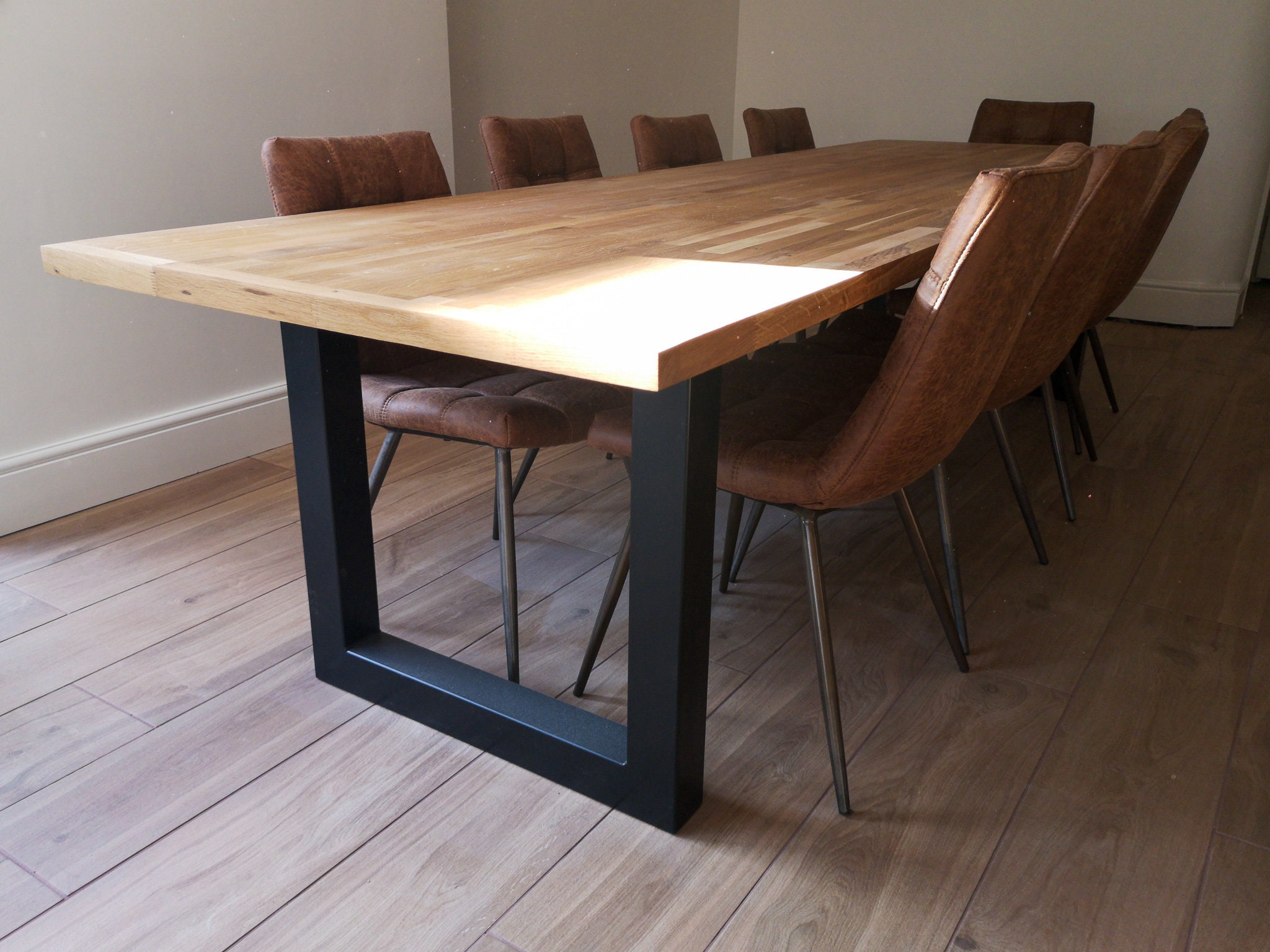Dining Table Legs: How to Select the Best Designs for Your Room
Selecting the ideal dining table legs is vital for both aesthetic and practical consistency in your dining room. Whether your room flaunts a streamlined, modern ambiance or leans towards a much more typical ambiance, the design of the legs can dramatically influence the general appearance. Tapered legs emanate modern beauty, while turned legs offer a nod to traditional beauty.
Evaluating Your Eating Area Style
Just how do you establish the best table legs for your area? The response begins with a detailed assessment of your dining room style. A cohesive design guarantees that your table legs improve the general aesthetic instead of clash with existing elements. Start by observing the architectural features of your dining room. Are there popular qualities such as exposed beams, detailed moldings, or minimalist lines? These information commonly dictate whether a conventional, rustic, contemporary, or industrial design is most ideal.
Following, think about the existing furniture and decor. The products, shades, and structures within the room play a crucial role. An eating room with streamlined, contemporary chairs and metallic accents might benefit from straightforward, structured table legs. Conversely, an area loaded with classic pieces and rich materials might ask for elaborate, sculpted legs.
Lights also affects perception. All-natural light can accentuate specific products and finishes, while man-made lighting can highlight different facets. Lastly, make up the room's scale and percentages. Huge, open dining-room can suit heavier, a lot more substantial legs, whereas smaller areas call for more delicate, inconspicuous layouts. By thoroughly examining these factors, you can choose dining table legs that sympathetically mix with your dining room's style.
Popular Leg Styles Discussed

One common design is the conical leg, renowned for its sleek, contemporary appearance. Next, the transformed leg features complex spindle-like layouts, typically located in traditional and farmhouse settings.
Cabriole legs, with their distinct contours, are synonymous with French Provincial and Queen Anne furniture. Their elegant, moving lines bring a sense of elegance and historic beauty (dining room table legs). For those preferring a robust and straightforward style, square legs give sturdy support and a clean, geometric appearance, suitable for commercial or minimal rooms
Lastly, hairpin legs provide a retro, mid-century contemporary ambiance. Made from steel, these legs are both light-weight and solid, including an unique visual contrast to wooden tabletops. Understanding these styles will direct you in choosing table legs that improve your area's visual and performance.
Product Factors To Consider

Wood is a timeless option, understood for its heat and versatility. It is available in numerous species such as oak, walnut, and maple, each offering special grain patterns and shades. Steel legs, often made from stainless steel, iron, or light weight aluminum, provide a modern and commercial appearance while ensuring robust assistance. They are commonly much more resistant to put on and tear, making them a durable choice.

Various other materials like bamboo or rattan supply environment-friendly alternatives, bringing an all-natural and relaxed ambiance to the eating area. Each product has its pros and cons, and the ideal choice will rely on your particular demands and preferences.
Balancing Aesthetics and Performance
Attaining the ideal equilibrium in between aesthetics and performance is crucial when choosing eating Check This Out table legs. While the aesthetic appeal of table legs can substantially boost the overall atmosphere of an eating room, their functional aspects can not be ignored. The design of the legs must balance with the space's decor, yet they should also supply ample assistance and security for the table.
Consider the architectural style of your area. Smooth, modern-day insides might take advantage of minimalist, metal legs that offer a clean and unobtrusive look. On the other hand, standard setups commonly enhance transformed or sculpted wood legs that include a touch of style and refinement.
Functionality includes the security and resilience of the legs. Trestle legs, recognized for their effectiveness, can give solid assistance for larger tables, making them perfect for families or frequent entertainers. Alternatively, pedestal legs can supply even more legroom and Learn More Here versatility, enabling better seats setups
In addition, the elevation and positioning of the legs are important for here are the findings comfortable dining. Legs positioned as well far internal might hinder seating, while those also near to the edge can restrict activity. Therefore, thoughtful consideration of both visual and practical elements is extremely important for an optimum dining experience.
Customization and Do It Yourself Options
Personalization opens up a realm of opportunities for developing dining table legs that are distinctively customized to your preference and needs. Certain layout elements, such as turned legs, tapered forms, or detailed carvings, can be integrated to show your design.
For those inclined towards do-it-yourself (DO IT YOURSELF) tasks, developing customized table legs supplies both a rewarding experience and the opportunity to accomplish a bespoke visual. Do it yourself fanatics can source basic materials and utilize woodworking or metalworking tools to craft legs that satisfy specific requirements. Additionally, numerous on the internet tutorials and workshops supply support, making the procedure extra accessible for beginners.
Ultimately, whether choosing professional personalization or beginning on a DIY venture, the capability to tailor table legs guarantees that the end product harmonizes with your interior design vision, enhancing both capability and visual allure.
Verdict
Selecting the ideal dining table legs requires cautious factor to consider of the general style of the eating space, consisting of existing architectural features and furnishings. Ultimately, the picked table legs ought to enhance the decoration, providing both aesthetic appeal and sensible support.